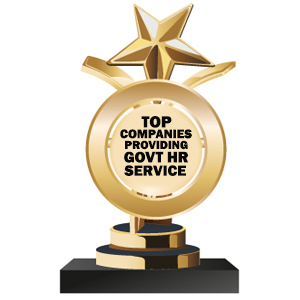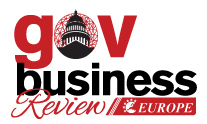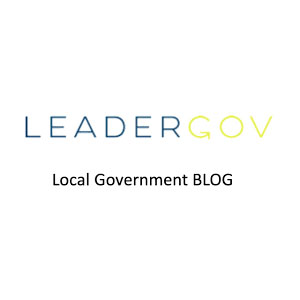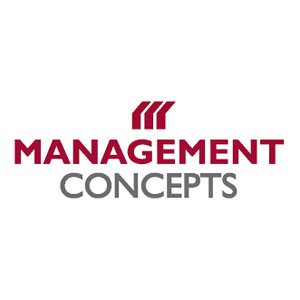Customer Experience in Government: Strategies for Success
Monday, December 08, 2025
FREMONT, CA: It can be expensive for firms to comply with all of the government's rules and reporting obligations. Manufacturers in the United States lose USD 2 trillion in sales per year as a result of paying an average of USD 19,564 per employee to comply. Including state and municipal rules raises the cost of compliance to roughly 17% of the US GDP.
A USD one billion increase in regulatory obligation might result in the loss of nearly 8,000 jobs. These regulations have occasionally become unbalanced, imposing unjustifiable constraints on enterprises that have stunted innovation and dampened growth and job creation. Even if the majority of firms would like fewer laws, what they want is to spend less time and energy complying with them. Most companies desire to follow government regulations, but they frequently lack the knowledge to do so. Businesses experience resentment and irritation as a result, and compliance suffers.
Governments may make business compliance easier and increase accurate, voluntary compliance rates by embracing a customer experience (CX) mindset. Additionally, the situations looked at demonstrate how bettering government-to-business (G-to-B) interactions can: Increased adherence to regulations, decrease the difficulty for business, and increase punishments for actual offenders rather than unintentional violators. Utilizing emerging technologies and stealing strategies from the CX arsenal of the private sector is part of adopting a CX mindset.
Customers in the conventional sense are not businesses that are governed by the government. They are powerless to resist. Government regulators, by definition, own the entire market. Government workers consequently aren't always aware of the challenges businesses encounter when dealing with the government. A sophisticated understanding of the business as a customer can be unlocked by adopting a CX mindset. One strategy is human-centered design, a multidisciplinary methodology built on a thorough comprehension of the client. User demands and experiences are the foundation of human-centered design. For instance, the system is created with the existing behavior in mind rather than requiring firms to change their behaviors to use the new system. Three key principles for enhancing the G-to-B relationship can produce significant improvements.
Understanding business consumers: Leading public and private sector companies are utilizing new techniques and tools to address the core issues that lie at the heart of improved customer service. The people in charge of delivering that experience can be reached using the knowledge gained through first-hand experience. Customer journey maps that depict the experience from the perspective of the business, call center conversation recordings, video footage of various aspects of the experience, personas that give the data a face and incorporate quotes from customer interviews, and more can all help employees relate to CX in a way that nothing else can.
Employees on the inside of an organization might not instantly understand the challenges they encounter or be aware of the informal workarounds they may have developed. While focus groups and surveys provide insightful information on customer perceptions, they don't always shed light on drivers or real behaviors. Leading companies utilize human-centered design to get a more sophisticated knowledge of the wide range of clients they serve. A human-centered system encourages users to continue with their current behaviors rather than forcing them to change them to fit the needs of a tool or system. It requires a thorough awareness of the consumers' demands and experiences—both those they share with the organization and, perhaps more crucially, those they keep to themselves.
Initially, identify the transactions involved to comprehend how firms use a service or program. For this, data on business contacts must be gathered and analyzed already, as well as survey results, call center and issue tracking analytics, help-desk interactions and resolutions, social media scans (or digital listening), and site analytics. It's essential to understand the kind of experience that businesses want from a particular transaction. Government agencies can better understand the business user experience by getting first-hand information from businesses and employing ethnographic research tools to document the journey throughout the whole service encounter.
Governments can utilize analytics to estimate the likelihood of compliance and the repercussions of noncompliance when developing commercial customer segments. When it comes to compliance, many businesses kinds are highly diverse from one another. Some might adhere closely to the law, while others might be repeat offenders. To create tailored strategies to promote compliance and lower the friction and expense of compliance, a risk-based approach divides enterprises into categories based on the risk of non-compliance. For instance, a company with a high risk of noncompliance could require regular inspections, whereas a company with a low risk might benefit from the quick acceptance of its licenses or permits.
Each company has its own set of features, including its size, location, number of years it has been in existence, industry sector, financial situation, and history of tax and regulatory compliance. Location, the surrounding business climate, and a company's network of suppliers and customers all influence a company's personality. An agency can tailor its initiatives to particular corporate customer groups with the aid of customer segmentation. It aids in transforming the particular requirements of each customer sub-group into service provisions that profit both that group and the government organization.
The team looked at the problems that business users had when the State of Ohio decided to upgrade its business gateway. To further understand customer demands, the state conducted surveys, focus groups, and interviews. Based on their goals and how satisfied they were with the current gateway, the analysis classified end users into five groupings. For instance, the corporate employees cluster included persons who worked for businesses with a wider regional reach. These users sought functional improvements including simple password resets and log-ins, confirmation mailers for saving and uploading data, and the capacity to create personalized alerts even though they were generally satisfied with the business gateway. They were concerned with ensuring that their business conformed with all applicable state laws and regulations.
Young, educated, and tech-savvy entrepreneurs made up the aspiring entrepreneurs cluster. Their requirements were entirely different. They desired pertinent information, detailed instructions for using the gateway, and a dynamic help feature to help them with their issues. They were more eager to take advantage of government programs that would simplify their interactions and make it possible for them to fulfill their entrepreneurial dreams. The state updated the gateway after doing this thorough need analysis and taking into account the requirements of each of the five clusters. Segmentation is more of an art than a science; it is a continuous process that is carried out frequently to stay up with shifting client populations and changing demands and tastes.
While many organizations only view the portion of a customer's involvement that involves their job, journey maps are created to represent the customer's end-to-end experience interacting with a product, service, or system.
Create a unified vision for change: When it comes to offering a wonderful customer experience, the private sector outperforms the government. When you consider the tools accessible to chief marketing officers for market research and consumer segmentation. Leaders in the public sector must argue in favor of spending capital to enhance the G-to-B customer experience.
The foundational design principles—essential declarations of what the system and culture will do—come first in the future state vision or blueprint. These principles serve as the benchmark for measurement and the yardstick by which the program ought to be judged. Both the front-end customer experience and the back-end operations should be included in a service design blueprint, supporting decisions on business models, staffing, operations, training, and new services.
Governments can learn to create better compliance tools and convey how rules apply in particular situations by paying attention to user concerns. With its E-verify program, the United States Citizenship and Immigration Services (USCIS) accomplished this. An employee's eligibility to work in the United States is electronically verified using the free and simple-to-use E-Verify service. Employers only need to input information from Form I-9s of applicants into E-Verify. The system swiftly verifies a hire's eligibility for employment by comparing the provided information with databases at the Department of Homeland Security, the Social Security Administration, and certain state Departments of Motor Vehicles.
From the perspective of an employer, E-verify offers a considerably simpler route to compliance. In the past, it was challenging for businesses to determine whether applicants were lawfully permitted to work. It was up to the employers to determine if a potential employee's documents were legitimate or not. E-verify is used by more than 500,000 companies at more than 1.9 million hiring locations. The system examines more than 25 million cases annually.
Most people opinionate that the government has to concentrate on the economy and jobs. The removal of barriers that businesses encounter as they carry out their numerous legal obligations is one way that the government may assist. There are limits to what the government can do to increase economic competitiveness and job creation. However, it undoubtedly plays a significant—and occasionally defining—part in supporting a climate that promotes employment creation. It is in the government's best interest to make these transactions as simple as possible as long as firms must get licenses and permits, pass inspections, pay fees, and adhere to other rules.














